Larp critique: The Monitor Celestra Battlestar Galactica larp
Warning: this piece is longer and even more «me, myself and I» than my previous larp critiques (click here for demonic, post-apocalyptic and steampunk examples). Photos are copyright (their authors). If you’re in a hurry, scroll down to “in a nutshell”.
For my in-character recap, click here.
What the frakk did he want to go in that destroyer for?
I originally refused to watch the re-imagined BattleStar Galactica series. I remembered the «cheap Star Wars knockoff» feeling of the old ones and didn’t see the interest in remaking them. Then a friend made me watch the «33» episode, and I was instantly hooked. Being the proud owner of a bunch of LazerTag weapons, I started thinking of using them for a BSG larp. Then I saw that Germans did one, that the French did one, then the site I had in mind didn’t work out, so I dropped the idea. And then I heard that a few crazy Nordic larpers were going to do one. It was going to be far away from Switzerland, it was going to be run several times in Swedish with only one run in English, it was going to be expensive… but it was going to be done by people who knew how to put on a larp. I had read about Carolus Rex in Nordic Larp: the book and was envious. I had read about the work of Bardo in general, and was envious. So this was a way to experience some of this awesomeness for real, and I trusted these guys to do it right. I wanted that game to happen, and to be as cool as possible, so when they announced crowdfunding I contributed as much as I could. And the selfish asshole in me quickly noticed this could pretty much guarantee getting the character I wanted. Excitement kept rising over the months as more information about the game was released. It would be run in a Cold War-era destroyer of the Swedish navy, would be technology enhanced, videos explained the organizers’ vision, showcased some pretty amazing costumes… the team was really good about generating hype. When the date of the English-speaking run was finalized, it conflicted with my most anticipated Swiss larp of the year. Ah well, I had dropped so much money on it already: Sweden beat Switzerland.
Casting
As a player, I rarely pick military characters. I am not particularly attracted to war, violence in general (or even sports) and I escaped the French military draft thanks to my very poor eyesight. I am not interested in orders, discipline, guns or planes. I guess what I like best about armies is the looks of some uniforms. However, my favorite theme of the BSG series is the military-political one: what do you do when humanity is down to 30’000 people under attack, with a huge military space ship in the middle. How do you maintain democracy, how do you balance survival, freedom and values? The organizers had highlighted that the Galactica crew may be seen as fascists by the larger Tauron civilian group, and this is exactly what I wanted to play. I had already played Colonel Tigh in a BSG larp-boardgame hybrid, hence had already worn a makeshift blue uniform. For The Monitor Celestra I wanted to go Top Gun all the way and play a Viper pilot. I even started doing push-ups to somewhat fill the iconic double-tank top I would have to wear. I really wanted to be somewhat credible as a stupid testosterone-laden colonial soldier, convinced to be a hero saving the Taurons from their backward ways with his elite pilot buddies. And the game totally delivered on that end.
Pay and pray
Organizers were responsive, the three roles I was casted for all matched my requirements, and I picked the Viper pilot, Lt. R. Harris. The looks of all pre-game documents, from ship description to rulebook to character sheet were perfectly matching the theme, confirming the claims of high production value. The character description itself was pretty short: the longest bits were about what it means to be a Caprican or a pilot, not really about Harris as a person. That did give room for personal interpretation, and since the organizers had promised «a game jam-packed with high-stakes interaction», I figured that in-game events would compensate for the light built-in stuff. In the larps I play, most of your character personality, relationships, goals etc is pre-written by the organizers in sometimes great detail, ensuring in-game connections and events. Here, there were a few names and 2-3 sentence relationships for each, but not enough to sustain 32h of gaming, and especially not enough to make the Galactica crew feel as part of the unified team they were supposed to be. This, the players had to build themselves, before the game.
It was a fun and creative process: we connected through the forum and social networks, people built team rosters, invented common past events etc. But it is very time consuming and much less efficient than having these things already present in your character sheet, created by the organizers. We created call signs together, and a player suggested «Lightbulb» for Harris, which was perfect due to the a shaven head look and the limited mental capacity of the character. Further development than this was limited by time constraints. Not everyone had received their characters early, and real life, especially work was crazy. So running home to read the forums every night, connecting with players in a sort of an online dating process «looking for a liberal Caprican who loves Taurons and wants to be my enemy» was getting tiring.
The forum overall was not very practical from a technical point of view due to the several game sessions being mixed, and some key practical info, like bringing a towel for the hostel was hard to find. Not the end of the world, but easy to improve for next time.
Personal TMI stuff, feel free to skip
I am writing this part because it did affect my game. Two days before takeoff, I had a medical emergency. I won’t get into details, but I spent the day before departure doing tests at the local university hospital. Depending upon the results, it could be either nothing serious… or I would live a very short life under heavy pharmaceutical treatment, starting the same day. I suddenly couldn’t care less about flying to Sweden to pretend to be a space fighter. Eighteen hours and several tests later, it was nothing serious, and the symptoms could be controlled with regular meds. As there was nothing contagious, this meant the game was still on, but I was completely drained, both from the symptoms and the psychological shock. I tried to refocus by watching bits of The Hunt for Red October, a recommended inspiration source. And then I urgently needed to work on props, which helped with the stress but I still couldn’t sleep. The night lasted 1h30 and then I took the train to Zurich, the plane to Berlin where I used the 5h break to learn the ship navigation rules and memorize character names. I then met German players on the way to Gothenburg, one of them living in Tanzania, a hint of the truly international nature of this session.
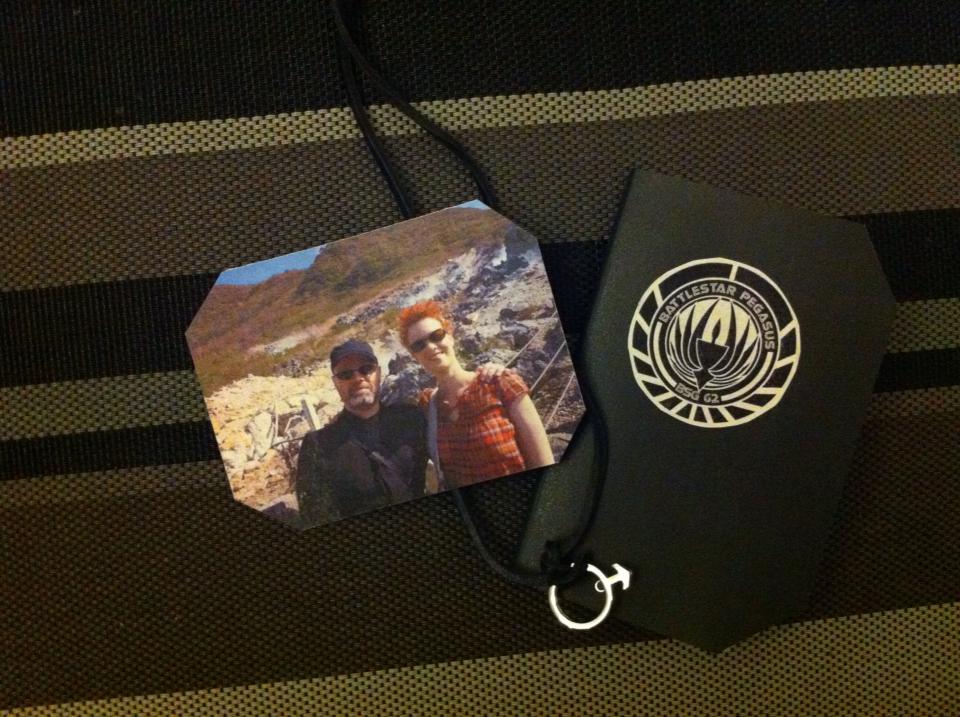
Last minute props: photo of lost family members, an Ares medallion and a notebook from Pegasus, where my character served before joining the Galactica (Thomas B.)
The larper Internationale
Atmosphere at the Youth Hostel was reminiscent of evenings at Knutepunkt: nearly everyone was young, Caucasian, energetic, liberal and said «fucking amazing» when they just meant «very good». Organizers were there, doing the check-in a very friendly manner which they kept throughout the week-end in spite of fatigue. It also felt very KP-like as the player list was a «who’s who» of nordic larp. People who write books, articles and even PhD theses about larp, people you see hosting or on stage at the Nordic larp talks were all there. It may be the stupid fanboy in me, but roleplaying with these guys makes you feel warm and fuzzy and part of something important. Add to that the non-nordic usual suspects of international conventions, and you really felt part of a «larper Internationale». I was happily surprised at the number of Americans, several of them first-time larpers (they rocked), BSG fans who had flown across the Atlantic for the game! I was tired, but desperately needed a towel so ended taking the tram without paying, bought a towel and tram pass at the local supermarket and went back to mingle a bit. I just felt surreal: 24h earlier I thought I was going to die, I was on 1h30 of sleep, it was really bedtime for me.
Game day
The next morning after a shower my health still sucked and the meds were not working, but there was a lot to do. I got the my Viper pilot costume, the overall was a wee bit short hence tight in the crotch area, but looked awesome. There were actual rank pins on the collar, and the airsoft replica sidearm in its leg holster felt nice and heavy (no ammo was used, whenever a gun was «shot» we would just react to the loudish «click» sound with injuries becoming worse with each game act). Thermal underwear, gloves and Yugoslavian army boots I brought completed the body protection from heat. And the flightsuit had pockets, meaning I could load heating pads, meds and snacks without an extra bag. Seeing everyone in costume raised the excitement level some mo
re: many of us had bought the double tank tops, and just being surrounded by people that looked like they walked out of the TV set was energizing. People kept trying to build connections in a very informal and messy way, as not everyone had hours to spend on the forums. I guess organized connection-building workshops like the ones described by Peter Munthe-Kaas would have been a blessing there.
Winter came and it’s not leaving anytime soon
The trip from the hostel to the ship was done by walking and tram. While we had extra clothes on top of our costumes to stay warm and hid our airsoft replicas to avoid causing panic, people did notice our weird looks. At some point a car stopped by us and the conversation went something like:
– What are you guys up to?
– We’re doing a live-action roleplaying game inspired by the BattleStar Galactica series
– You crazy lunatics! I love you!
We arrived at Maritiman and finally saw her. Oh my frakkin’ gods, the Smaland was beautiful! It was just the perfect playground for grownups, down to a sign saying «Closed for remodeling into a spaceship». Briefing was done on the freezing docks, and many of us started to freak about about how cold it would be inside the ship. We got a tour of the destroyer, and excitement skyrocketed. Sure it looked good in the pre-gamevids, but all the added touches, from green lighting to working consoles it was just awesome. It was so large, on so many levels, with some many cramped corridors full of odd metal pipes and weird noises. We were on a movie set. The costumes, now put in their intended setting worked so well. Even before starting to roleplay, refugees looked like refugees, crew like crew, techies had awesome helmets, you were immersed without thinking about it. Even the very diverse accents worked: for us Europeans, hearing Galactica marines and pilot played by Americans was perfect: it sounded just like the TV series. And for them, hearing our weird accents made them feel in some truly alien multinational scifi setting which also helped their immersion.
More tech and my first pre-game bleed
People were briefed on how to work the consoles and how to navigate the ship, a very manual process with stopwatches, graph paper etc as for in-game reasons the computer network was taken offline. The ship was also fully rigged with an internal phone system, which provided great roleplaying opportunities, yelling at mechanics at the other end of the ship etc. I later was taught how to use a torpedo console in-game, and was amazed. That thing was integrated in both the ship’s look and the Tauron color code: the plate around the screen was the same color as the ship’s metal, the browns shades of the GUI matched the Celestra uniforms… The buttons and levers to interact with it had been carefully chosen, they looked and even felt right when you pressed them to navigate the menus. As the creator of a Technocculte, small tech-enhanced larp, I can only imagine how many work hours of designing and coding all the consoles took. And they worked, with real in-game consequences and requiring unseen but live organizer involvement to really play the space battles on the other side of the computer.
We went back to freezing our asses outside: as the Galactica crew, we had to wait to let the Celestra game start before boarding it. Organizers found room in a warmer boat to wait in, and brought us tea. We killed time but really wanted to start playing. When finally left the «waiting boat» I bumped my head on the doorway. Nothing serious, but people started giving me funny looks as I my head started to bleed 5 minutes before game start. So I entered the Celestra with a blue band aid making like a mini-mohawk on the top of my skull. Hey, there’s war going on, makes sense some of us are wounded, right?
Themes and twists
The BSG and Caprica series feature many themes: military vs. civilian, monotheism vs. polytheism, where does humanity and AI start and end, Caprican vs. Tauron cultures etc. Playing The Monitor Celestra felt like the writers understood exactly what made these shows cool. They used these themes and expanded upon them, twisting them just a little bit here and there to provide larp-friendly material that was more than just copying & pasting the series, while still not betraying the genre. Setting the game on board of the Celestra, not the Galactica was also very smart. By describing a ship that looked different than the Galactica, they could keep the WYSIWIG intact without having to compromise with a CIC that didn’t look exactly like the series… They could also have more players in non-BSG uniforms, had more freedom to explore other aspects of scifi, including a nice Hunt for Red October meets Alien angle for the Celestra crew.
The plot already!
The game took place at the beginning of the series. After the fleet stopped at Ragnar’s Anchorage to stock on ammo. A Galactica party of officers, engineers etc is sent to (re-)convert the Celestra into a military ship. The Celestra is an old Monitor class ship from the first Cylon wars that was used to do many other things since it was de-commissioned. It is full of Taurons, from a crew who has very deep emotional relationship with their ship, to Taurons refugees (including quite a few religious nutcases and a whole lot of ha’la’tha mobsters). And of course a bunch of scientists from the Vergis corporation working on -to make along story short- artificial intelligence. Yeah, kinda Cylon-like things, but their heavily armed guards ensured no one was nosing around the labs until the execs decided they needed some guinea pigs.
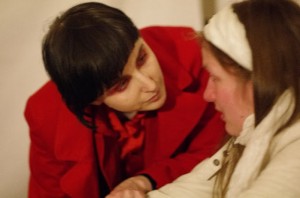
Phantom play: is that AI/Goddess comforting or tormenting the philosopher on the right? (Larson Kasper)
It is impossible to summarize all the plotlines, but let’s say the ship changed commanding faction several times, more or less violently. It was first a joint Galactica-Celestra affair, then Galactica-driven, than Celestra/mafia driven. The ship was «haunted» by AIs/Gods, NPCs dressed in red playing «Caprica 6» type characters, only visible to the players they touched. I didn’t get touched but really enjoyed watching people going progressively nuts as they talked with people who weren’t there or starting to follow strange orders.
The ship encountered many things, from human-looking Cylons, to weird AIs/Gods/constructs, to an independent fleet of anti-corporate Tauron survivers etc. Then end got rather religious with themes of forgiveness and redemption, as people disagreed on how to deal with the weird Cylons that wanted to ally with the Taurons. Finally, humans and toasters mutually annihilated each other in a torpedo-missile-Viper-nuke-tillium-venting battle. For more details on my actual game scenes, see my separate, in character recap.
Act structure
The game was split into four 8-hour acts, one on Friday night, two on Saturday, one on Sunday, and we got well-deserved sleep and warmth in between. They started and ended with great mood music composed for the game, being played throughout the ship, and allowed everyone to get in and out of character at the same time. Apart from the fact we were not allowed to sleep in the destroyer, one intent of the acts was to use acts as a way to build a dramatic story arc of increasing tension, for example with increasingly lethal combat rules. I don’t think it worked really well on that point. If I know that my PC cannot die, i.e. that my game cannot stop I can act a bit more recklessly. But once you know you can die, things change and people seemed a bit m
ore cautious to me as time progressed. Even though we were instructed to «play to lose», we were also told that in-game stupidity or violent actions would have consequences. People wanted a nice ending scene for their characters, so they were actually rather careful until the very end. In my opinion, the increase in tension at the end of the 4th episode was more due to the players knowing this was the end of the larp, rather than any progressive increase in tension. For my point of view, once the Celestra/Ha’la’tha control
led the ship after a great terrorist takeover of the engine room, game was pretty flat until the very climactic ending. What did work in terms of increasing tension was how crazy the ship’s engineers were getting. With time, they talked more and more about the ship as a pet, as person, as a god. They were caressing machines, patting pipes, which made us non-believers feel like being in a madhouse. That rising sense of madness and impeding doom worked much better than people waving guns around the CIC all the time.
Playing a pilot: the good
Playing imperialist top gun was fun. The elite feeling was there, and with our costumes we were easily identified as «the Man». I think that just by walking around looking all grim or cocky we reinforced the BSG atmosphere. I got some positive feedback after the game from people who were confronted to my «stupid US marine» vibe, so it’s always nice to know the role worked.
Flying proper was done through meta-scenes, of which there were only two for me in this game, one in the middle and one at the end.
For the first one we went to explore a space station… represented by an actual submarine docked right next to the destroyer. Climbing down into that thing, crawling into its tiny spaces full of weird pipes, only to be greeted by human looking Cylons and a symbolic representation of a Centurion (white strobe light, red light, airsoft machinegun) was awesome. Plus this was a high-tension situation as several of us had their guns taken from them by Tauron mutineers. I know how much work and time-consuming this type of scene is for organizers: you need a separate space, dedicated NPCs etc, but it makes you feel great as a player to get your own special moment.
My final scene was a Viper battle scene handled in the same as tabletop roleplaying, with an organizer describing us what we saw and asking how we reacted. My character decided to go for the old Cylon stealthbaseshipthingie and die guns blazing. I exited the game, and the player of another pilot, who was for a unification with the cylons, went all like «you did the wrong thing, we were supposed to ally with them!». Since we were out of game I thought «fuck, I know the in-character briefing was short, but friends with them? I though they sent us out because they were hostile! Did I just destroy everyone’s ending due to an out-of-character misunderstanding of orders?» This was thankfully not the case, but the players of pilots who were for the unification were so into their roles that bleed on the topic carried for a while after game end, and until now in the forums.
Playing a pilot: the bad
While the sub was awesome and getting to pull the trigger in the final battle was great way to end the game, I really wish I’d have had one more flying mission. I knew there couldn’t be a lot due to organizer resources required, and I didn’t expect something high tech like playing a video game shooting at raiders. But I would have liked to roleplay something reflecting pilot bonding during dogfights, yelling «behind you!», actually saving each other’s lives live, rather than through back story. Two flight missions over 32h of play was a bit light for me.
Overall my main issue with this larp was the waiting for something to happen. One cause was in-game mechanics: if the command crew decided to jump when they saw a cylon raider instead of launching Vipers, well… that meant we wouldn’t play a flight mission. Having to stand ready in case of combat situation «battlestations, set condition 1 throughout the ship» with people forgetting to change conditions once things cooled down also conflicted between the character needing to be there due to military procedures and the player just being bored and wanted to roleplay something else. All the pilots were great roleplayers, so just chatting and dissing each other in character was fun, but there’s only so much banter you can do before getting bored.
I must admit the players of high-ranking Galactica officers were really good about delegating overall. The «plot sharing» was impressive at the beginning, but I had the feeling they were a bit overwhelmed towards the end and spent less time sharing and welcoming other’s people’s suggestions and requests. So the old larp rule of «top of the in-game hierarchy gets more game» did resurface. And technical limitations of the sound system meant that not everyone knew all the time what happened with the ship, battle outcomes etc, so this increased the disconnect between active navigator crew and the rest of the game even worse.
Boredom causes
My bathroom breaks were also meds break, I popped pills throughout the game, and lost 2kg in 4 days. They’re not back, I can’t complain, but I did sometimes find hard to concentrate. Reacting to stuff was easy but being proactive was a problem and I had selectively remembered that bit from the rulebook:
Active players will have no difficulty filling the 32 hours of actual gameplay with drama and high emotion. We intend to make solitary introspection and menial tasks into things to seek out, if you want to experience them, rather than main components of the experience. This pacing might seem intimidating to players used to slower fantasy games, but once you get into the habit of constantly seeking out new dramatic scenes, we believe everyone will enjoy having a game jam-packed with high-stakes interaction.
I should have paid more attention to «active», and «constantly seeking out». I should have come up with lots of ideas for things to do but I was too tired, too passive, I don’t know. Had I been told «this is like a mass larp, it’s a sandbox where you need to bring your own game», I would have tried to work on it weeks in advance. For example I’m going back to Conquest of Mythodea this year and we have months of preparation to ensure we get a dense game while there. It seems to be a larp cultural difference thing, that self-creating plot is expected in Swedish larps. But this being an international game, it would have been nice to be told this in clearer terms, and also for everyone to get their characters earlier, because I am not very good at coming up with plot on the fly. Finally, I didn’t feel like going begging for plot from other players, it didn’t feel natural. There were things I could have done to stay busy as a player but that would just not be logical for my character. I went through a bad case of this once when playing a sociopath catholic fundamentalist in a post-apocalyptic zombie game (at 22:49 in this video), where I just connected with no one and got bored. In Celestra it was not as bad because Lightbulb was smart enough to know he needed to interact with people to survive, but I think with a more sociable character I would have had more fun.
Final regrets
In retrospect, I also should have played my character more obnoxious and violent, but I did not want to be «the bored player who randomly attacks people». However I should have, because I actually had good in-game reasons to do so. To alleviate boredom I did walk around the ship, talked to many people like the crazy Vergis scientists and execs, which was fun and informative but not very emotionally involving. As boredom progressed, the feeling changed from «being in a movie» to «watching a movie». Whenever a discussion or action would start it drew me back in. I did get a few very intense scenes and unexpected character development, which I’ll describe more in the in-character recap. But otherwise I was regularly drifting mentally away from the character. And talking with other players, several also got the same type of disconnecting boredom, so I am not an isolated case.
The worst about this is that as an organizer I know how to fix it:
– write more connections and personal goals in the character sheets before game starts.
-trigger more organizer-created in-game events directed at non-leader, non-navigation character crews.
I don’t have the skills or connections to make badass consoles or rig sound effects across an entire destroyer, but I can create enough plot for everyone to ensure and intense, fast-paced experience. It’s a rather common skill, so it was frustrating to not see it being used enough in this larp, again possibly due to different priorities of different larp cultures. But bottom line is these long lulls prevent me from saying Celestra was my best larp ever, and it feels a bit like having missed the ultimate larp orgasm when you were nearly there.
So apart from the good looks and freezing weather, what was so Nordic about it?
This is one of the questions us French larpers asked ourselves right after the first act. There were factions, loudmouth players, scheming, in-character banter, a line to the food stand (which tasted better than most larp food I’ve experienced), some good and some bad acting… apart from production value it felt like our usual larps. Some differences may include the instruction to «play to lose» but as some players pointed out, overall people were playing characters that were super competent at what they were supposed to do. From an emotional point of view, I was actually more moved by lightweight nordic games, e.g. running A serpent of ash or playing The kick inside. In a way the Hollywood aspect of Celestra, which drew me to it, got in the way experiencing strictly human feelings.
Another Nordic thing was the «it’s OK to touch» rule. I didn’t follow it as much as I could have: my light contact fighting, was too soft and I was too scared of pushing the other into sharp angles and hard metal parts. Same for more tender contact: the rules explained we should be ready for closed-mouth kissing, but when my character finally embraced his romantic interest in a heart-wrenching goodbye scene, my feminist sexual assault alarm rang and I went for the cheek instead. I guess if I play more in the Nordics I’ll get used to it, but it’s really a «don’t try this at home» kind of thing.
The biggest nordic thing that positively affected my game was probably sharing. In France and Switzerland, secrecy is a huge part of what makes larping fun. Add to this many people playing to win, or at least looking for the pleasure to discover things by themselves, this can result in information retention. In Celestra however people were so open about their secrets, like the players of the super secret spy squad dropping physical clues just to give more game to people. This has already had an impact on my playing: this past Friday night at a steampunk larp I shared way more than I ever had before Celestra.
Aftermath
After leaving the game and thanking the organizers, we were all still into it, shouting «gangway! make a hole!» to ask for space in the tram like we had been doing in Celestra’s cramped corridor for three days. Everyone was saying «frakkin’ amazing» instead of «fucking amazing». The post-game photoshoot enabled us to keep the costumes for a bit longer and to debrief together. A blessed shower later, it was on to the after party. Not wearing thermal underwear anymore meant freezing our asses until we reached the pub. Such parties are a given in many countries, but we rarely do those in France or Switzerland, so it was great to chat with people as their real selves and re-assure people i was not some imperialistic asshole. I was so tired I didn’t push very late and collapsed at the hostel. The trip back the next day consisted in me waking up only to change planes and trains, then crashing into half sleep punctuated by «loading torpedo!» sound effects and green lit room flashbacks. The game stayed with me for the better part of the week, and I spent hours on social networks, connecting with the other players. So even though this was not my «best larp ever», it was such an intense experience from an artistic and human point of view that it did leave a lasting mark on me, and I am now looking for more.
In a nutshell
What sucked:
- Outdoor Gothenburg weather
- Uneven distribution of active plot, maybe due to too much focus on ship/military structure/space maneuvers
- Expectation that players create their own game both before and during the game, while «pay and play» and «jam-packed with high-stakes interaction» conveyed the opposite impression
- My overall energy levels
What rocked:
- Amazing 360 environment, WYSIWYG ship, lights, consoles, costumes, eye candy: best-looking scifi larp ever
- Fantastic theme writing perfectly understanding what makes BSG cool and how to expand upon it
- Super friendly, creative and motivated organizers and international players
So let’s end this with a final thank you to everyone involved and the insane amount of work it took to get this going. Let me know next time you’re organizing something, I want to experience that kind of thing again!
Edit: for a great recap by a first-time larper, check out Jeff’s blog post.
For a great video and text recap by Petter Karlsson and Carolina Dahlberg, featuring interviews and beautiful pics from Game 3, check out this blog post.
For a great podcast review of game 3 by Claus Raasted Herlovsen, click here.
Related
11 Responses to Larp critique: The Monitor Celestra Battlestar Galactica larp
Leave a ReplyCancel reply
No Trackbacks.
Tags
2013 afroasiatik burlesque conquest of mythodea convention critique défi XVIIIème english français french french larp gn gniales gnidee hip-hop huis clos jdr jeu de rôle jeu de rôle grandeur nature knudepunkt knutepunkt kung-fu lacepunk larp le four fantastique murder party mythodea nodal point nordic larp old news orc'idée podcast radio roliste rap review roliste sk2012 solmukohta steampunk stim suisse swiss larp switzerland thomas b. XVIIIèmePeeps be commentin’
- GEESAMAN8 on Deux GN avec du Star Wars dedans, un marathon et de l’oralité
- Steampunk Props Part 3: Gun, Smoke Rings video, Bubbles, a Chandelier and Art by Latranis - Thomas B. on Cheese-eating larper monkeys: the GNiales 2011 recap
- I'm a size 47 media whore and here's what sells online - Thomas B. on And they piss like I cry over unfaithful women
Search

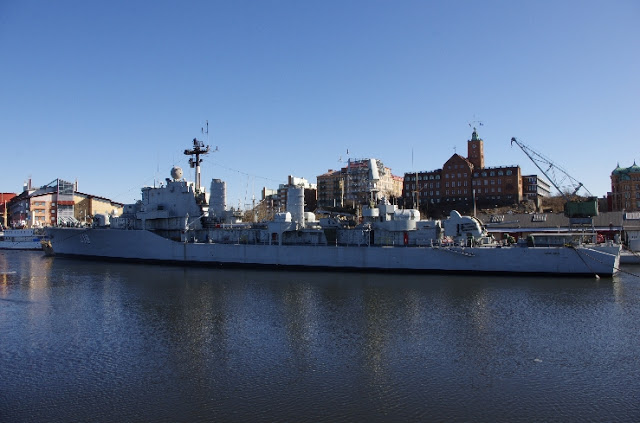
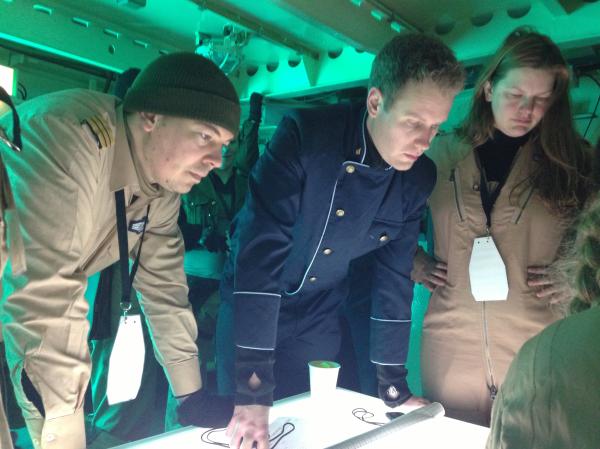
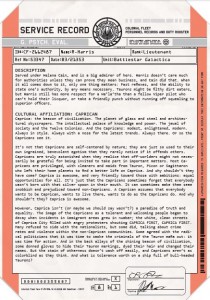
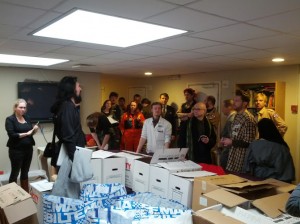
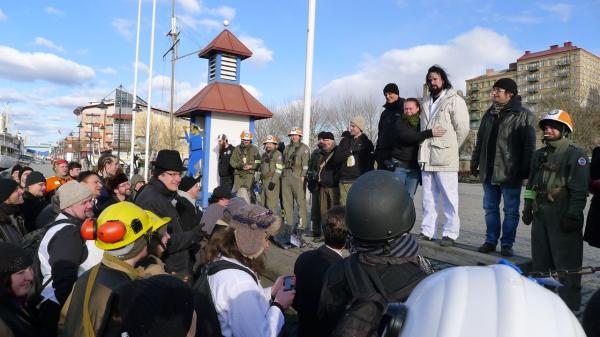
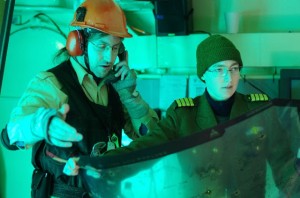
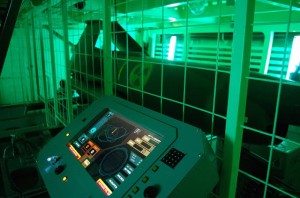
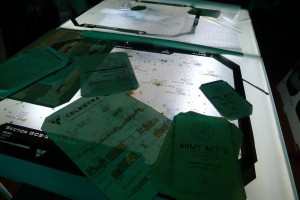
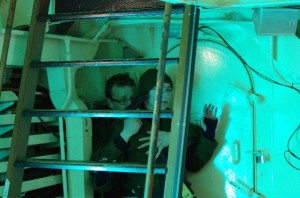
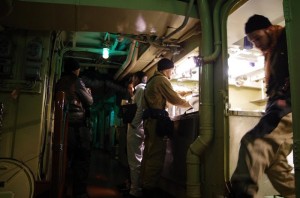
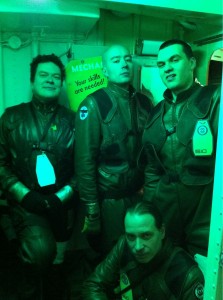
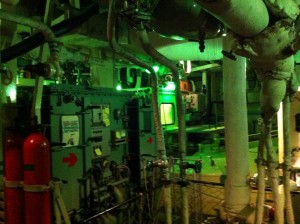
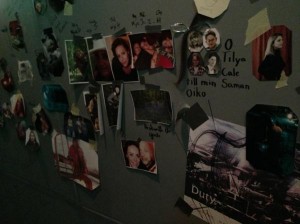
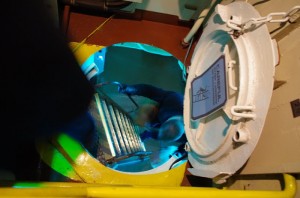



Thanks for this thought-ill review. This was my first Larp, so I am curious about how the more experienced saw it. It was obviously my best (and only) larp ever, and wasn’t bothered by the drawbacks (except no towel. That sucked until I bought one in town).
I also somewhat regret playing my character so intensely (a Tauron racist who refused to speak to Capricans). I think I was the one who disarmed you. That means there were plenty of people I couldn’t talk to. Right for the character, but les so for me as it made it hard to get involved in more plots.
Overall it was a great experience.
That should be “thought-full.” Damn autocorrect.
You were indeed the one that disarmed me, and totally credible in that role :). Thanks for your great recap, I linked to it at the end of this post!
[…] Larp critique: The Monitor Celestra Battlestar Galactica larp […]
Thanks for sharing, Thomas!
Insightful. 😉
Thanks Claus, and same to your podcast, added 😉
[…] days after -and still reeling from- that Swedish Battlestar Galactica larp, it was time to try something completely different. But on a Friday night, after a long work week, […]
[…] Thomas Be – Monitor Celestra – Game 2: Larp critique Thomas Be – Monitor Celestra – Game 2: In-character recap […]
[…] in the 90s), in a very entertaining manner. And from a pure navel-gazing point of view, I think my own impressions of the game’s strengths and weaknesses were validated, and that always feels […]
[…] have tried many larp characters: airship and Viper pilots, vampires, hobgoblins, demons, princes, the-bad-conscience-of-a-lover-hiding-in-a-closet… but […]
[…] enable an easy way out of uncomfortable scenes. For those that wanted more intensity, I reused the “frakk” rule from The Monitor Celestra and changed it to “C’est à moi qu’tu parles?”, a scene from La […]